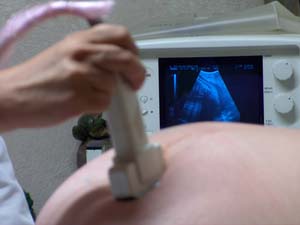Ultrasound Technology
This article involves the next generation of ultrasound technology.
A fully digital 4D ultrasound system is on track to provide a ‘next generation’ solution for medical imaging. This will allow medical practitioners to provide speedier treatment and improve on therapeutic success rates.
The high-quality imaging system was developed by ADUMS, an IST-funded project that ended in April 2005 and will reduce diagnostic time significantly.

Furthermore, the advanced technology uses off-the-shelf computer hardware, making it a much more cost effective alternative to expensive, purpose-produced ultrasound machines.
“The entire process of ultrasound has been slowly shifted from the traditional devices and is now utilized in software,” stated the Project Coordinator for ADUMS.
“The mechanics of the machine forms mechanical wave bursts and collects the echoing. Once the echoes are heard, they’re translated into digital form and the remainder of the processing is completed by software.”
What is 4D Ultrasound Technology?
4D ultrasound takes multiple images rapidly in succession and creates a three-dimensional video. This is invaluable for the ultrasound technologist in making an intricate diagnosis.
A critical factor in ultrasound image processing is the beam former. This is the part of the system that provides the focusing for the ultrasound beam.
President of the Canadian National Medical Technologies is one of the project partners. He maintains that even today's most advanced medical ultrasound imaging systems suffer from very poor image resolution.
“This is the outcome of the tiny size of utilized groups of sensors and the distorting effects caused by the human body's non-linear propagation attributes,” he suggests.
“The ADUMS tech. replaces the beam former of the ultrasound technology systems with the adaptive beam forming setup that has been created for the sonar array systems of the Canadian Navy. The ADUMS project outcome shows that the new adaptive beam former greatly improves, very cheaply, the image resolution capabilities of the ultrasound imaging systems, which will also result in better diagnosis.”
Until now, each new generation of the hardware component of ultrasound devices was, in effect, a complete redesign.
“However, ADUMS tech is set upon a complete software approach, using off-the-shelf computer components,” explains Dr Sakas. “Thus, a redesign from scratch will not be necessary and future improvements can be made by extensions of existing software.”
He also adds that the portability and the low cost of the 4D ultrasound systems will allow medical practitioners and family physicians to have ready access to diagnostic imaging systems on a daily basis, making a valuable contribution in the field of preventive medicine.
Now consortium partners are using the new technology for their own businesses and are in the process of promoting it to other organizations that use ultrasound technology.
Site Contents
Pregnancy
- Getting Pregnant Tips
- Signs of Being Pregnant
- Pregnancy Warning Signs
- 3 Stages of Labor
- Good Sleeping and Pregnancy
- Sleep Hygiene and Tips
- Top 10 Pregnancy Questions
- Advantages of Natural Childbirth
- Why An Early Pregnancy Ultrasound?
- Why A Late Pregnancy Ultrasound?
- Gender Ultrasound Overview
3D Ultrasound
- What is a 3D Ultrasound?
- What's the Procedure Like?
- Reasons for 3D Ultrasounds
- Ultrasound Technology
- When & Why: Diagnostic Ultrasound
- Is a Prenatal Ultrasound Risky?
- Ultrasound Machine Risks / Safety
- Scheduling Your 3D Sonogram
- Preparing for 3D Baby Ultrasound
- Ultrasounds FAQ